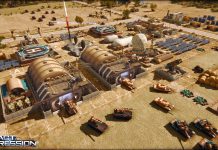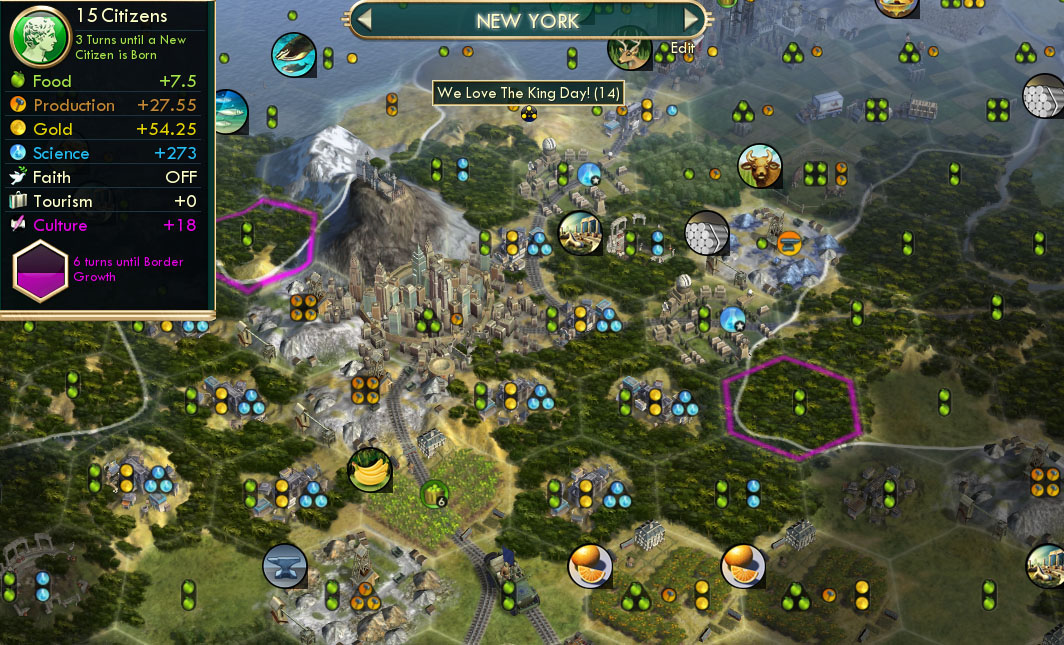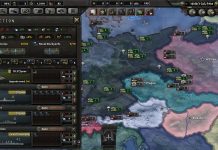City Placement part 2 : Worst spots to build cities
[startclear] [postad]In Civilization V optimal city placement is key! You might think spamming a few cities does not matter but the placement of each city you found or conquer has a big impact on your game. The biggest effect is that each founded, and annexed, city will increase the culture required to get a new policy. Each additional city will result in you having to wait a few extra turns. Therefore the quickest way to get new policies is to have a few large cities producing a lot of culture, possibly with the help of puppet cities. Each additional city owned will also generate unhappiness, “generated from number of cities”.

This article will show you where you should avoid placing your city, so you can avoid making mistakes! This guide will work for Civilization V “vanilla”, Civilization V Gods & Kings and Civilization V Brave New World.
[stopclear]Multiple tiles that provide no income
Desert tiles
Desert tiles will provide you with absolutely nothing in Civilization V! Therefore city placement near desert tiles should generally be avoided. There are a few exceptions:
- The Petra wonder will provide all the cities desert tiles with 1 food and 1 hammer . Building a farm on a desert tile with Petra will results in 3 food and 1 hammer. This is equal to a regular plains tile.
- The religious upgrade Desert Folklore will provide 1 faith for every desert tile within your borders. This can pretty much double your faith output if used strategically.
- Morocco (BNW only) can build a Kasbah on desert tiles that provides +1 food, +1 production and +1 gold.
- You can build mines on a desert hill.
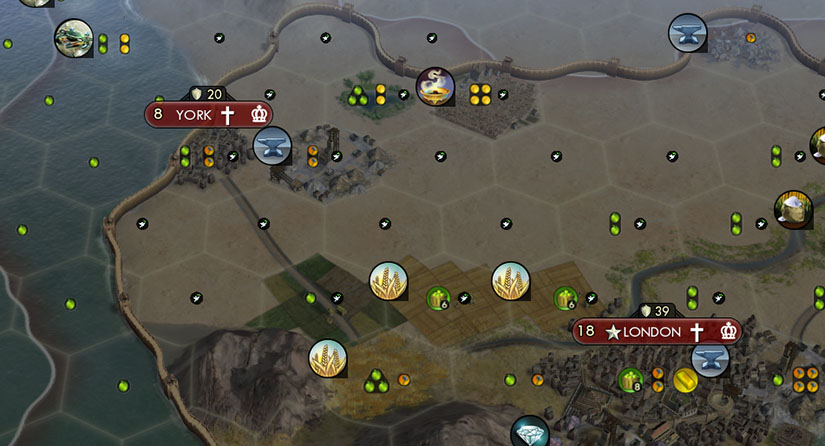 This example clearly shows some bad judgement of the AI. The food is used by the capitol, which only leaves the ocean tiles for providing food. Yes the city can grow, and yes you could build some farms next to the ocean and river. But it will never be a proper city! Also notice the extreme lack of production (only 2 hammers!).
This example clearly shows some bad judgement of the AI. The food is used by the capitol, which only leaves the ocean tiles for providing food. Yes the city can grow, and yes you could build some farms next to the ocean and river. But it will never be a proper city! Also notice the extreme lack of production (only 2 hammers!).
Center of Mountain tiles
Mountain tiles are really good (check further in the guide), but city placement in the center of them is not! 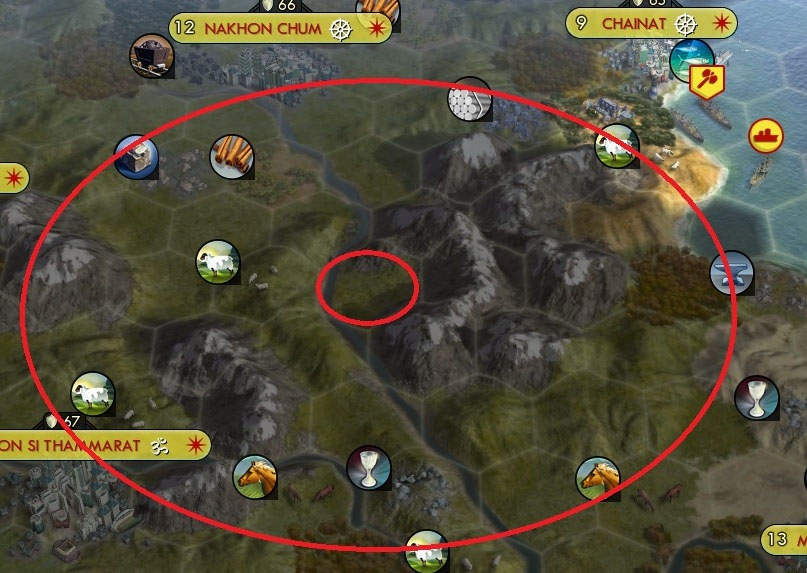 Early game this city will be nice due to the abundance of luxury resources, grass tiles, hills and the river. However, once the city grows you will realize 12 of the 36 tiles are mountain tiles that cannot be used. Meaning that if the city ever reached population 24 it would not be able to work additional tiles.
Early game this city will be nice due to the abundance of luxury resources, grass tiles, hills and the river. However, once the city grows you will realize 12 of the 36 tiles are mountain tiles that cannot be used. Meaning that if the city ever reached population 24 it would not be able to work additional tiles.
Snow and Ice
Similar to desert tiles the snow tiles have no gains with the exception of building a mine. Ice tiles are similar to mountain tiles meaning units can never move on them and they can never be improved. City placement near too many snow and ice tiles should be avoided. 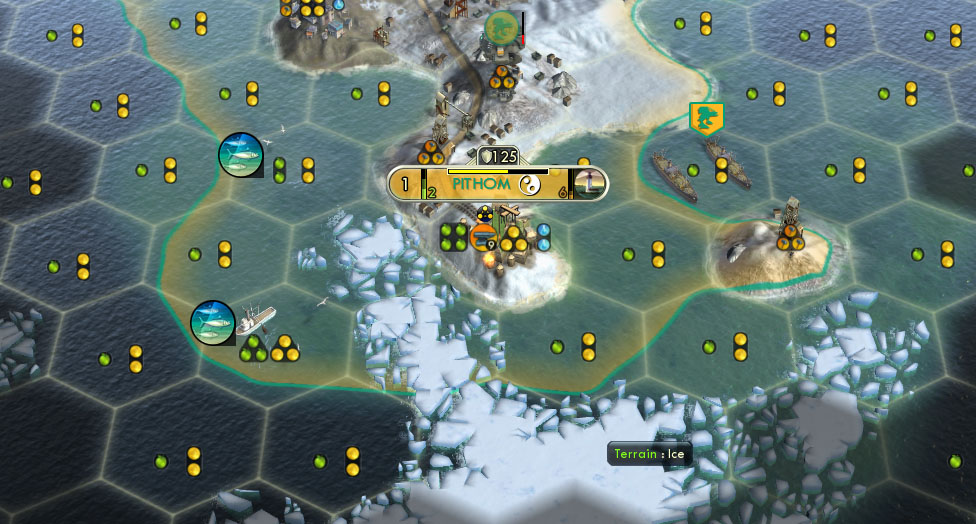
Edge of the map
The earth is round, but not in all Civilization V maps. Only map such as “Continents” and “Earth” are round. Other maps have edges. Do not place your city too close to edges! 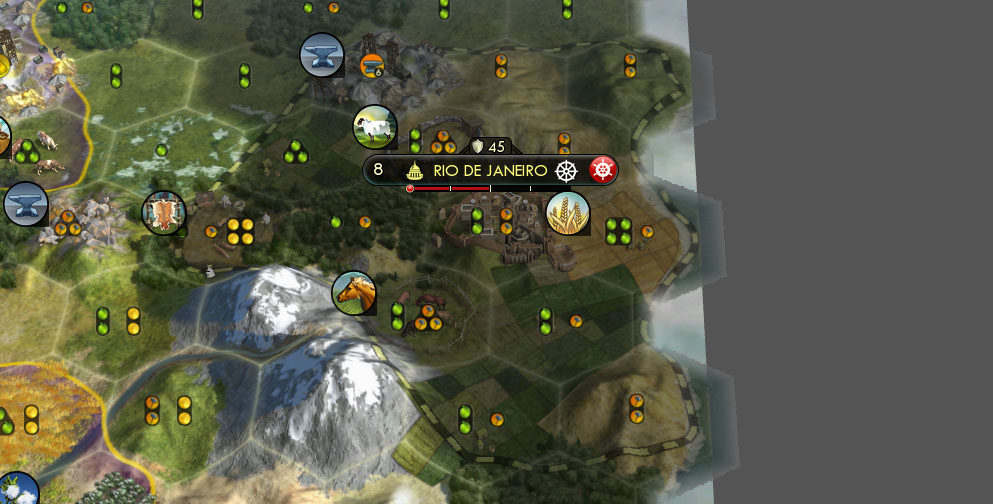 In this example Rio de Janeiro has only 26 tiles available. Even when moving the city one hex to the left would result in a loss of reach.
In this example Rio de Janeiro has only 26 tiles available. Even when moving the city one hex to the left would result in a loss of reach.
More water than land tiles
Although you will certainly need ocean cities, having too much water with too little land will always result in a city with very low production. Therefore construction of boats will take very long. Water required wonders will be almost impossible to obtain. 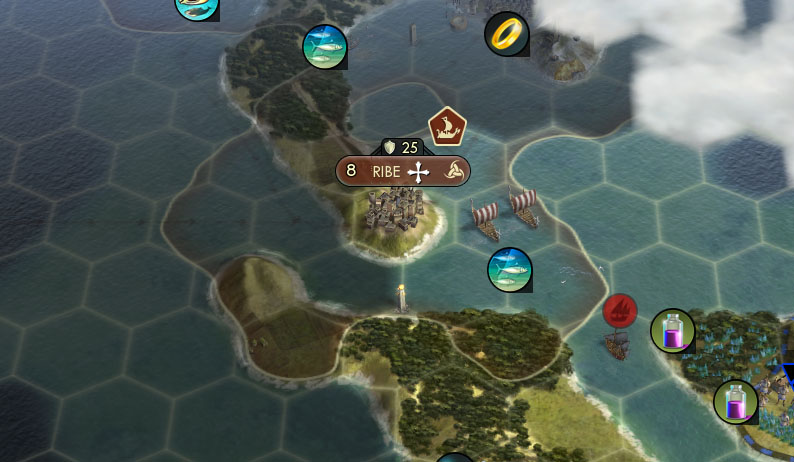 A city will have 36 hexes. In this example it only has access to 4 with a maximum of 9 tiles. There are only 3 hills meaning production will be extremely low. If you place your cities on a regular coast line you will have no issues:
A city will have 36 hexes. In this example it only has access to 4 with a maximum of 9 tiles. There are only 3 hills meaning production will be extremely low. If you place your cities on a regular coast line you will have no issues: 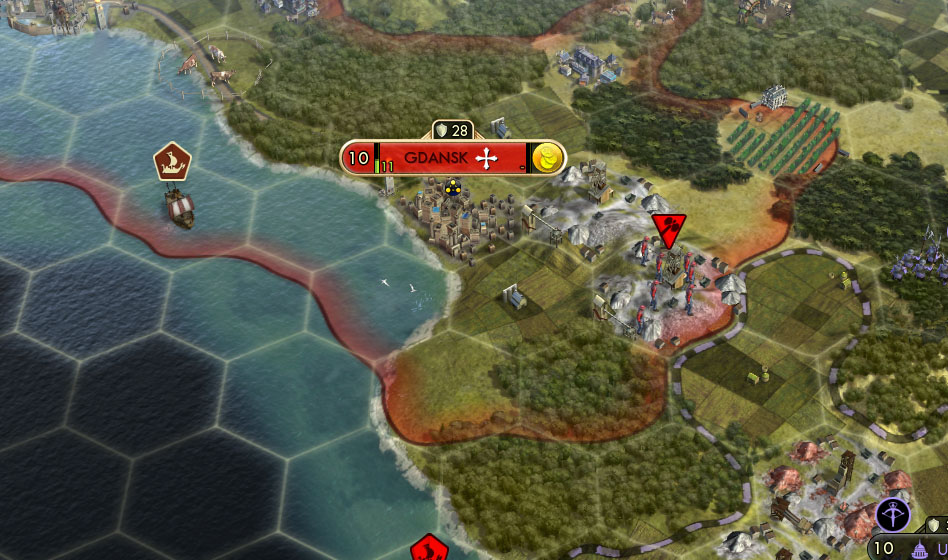 In this example 9 out of 36 tiles will be ocean tiles.
In this example 9 out of 36 tiles will be ocean tiles.
Next article
Now that you know where NOT to build cities, let’s take a look on how to space them. Building them too close together is a bad idea! Brows to: Civilization V City Placement: City Spacing
Thanks for reading this article, if you have any additional questions feel free to post them in the comments.







